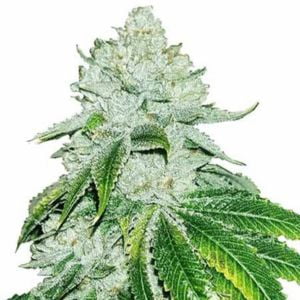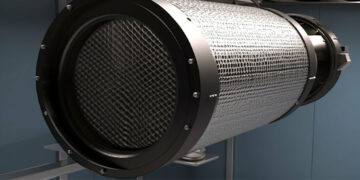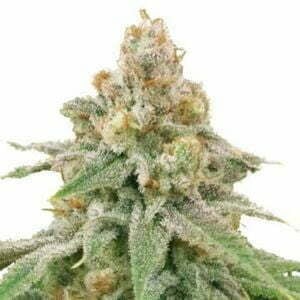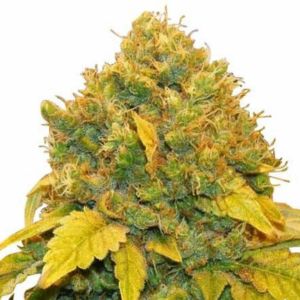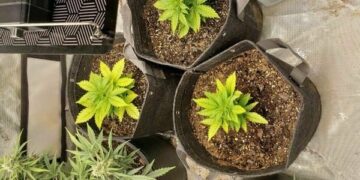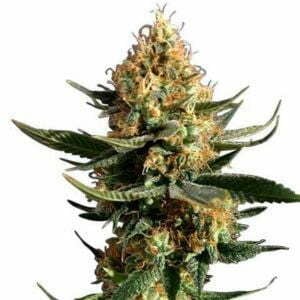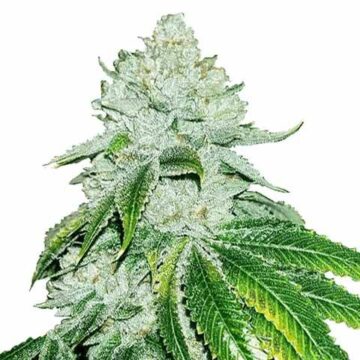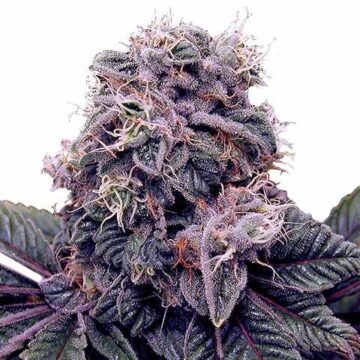In a previous article, we discussed light dep cannabis extensively. If you think it might be right for you, you may wonder, “How can I set up DIY light dep for my plants outdoors?” This article will answer that question.
Light deprivation doesn’t have to be complicated or expensive, but it is limited to outdoor grows. If you’re not sure if you plan to grow outdoors, check out our outdoor vs indoor pros and cons article first. If you decide to utilize light deprivation, simply keep reading, you’ll have a backyard light dep greenhouse up and running in no time.
What is Light Dep, and why should you consider it?
Light deprivation systems let outdoor growers manipulate the amount of light exposure their outdoor plants receive. This is done by blocking out all natural light on a regular schedule to force plants to flower earlier than they would naturally. The benefits here are plentiful. First, the harvest happens faster, so you can have flowers ready in less time. Second, you can squeeze in multiple harvests in one growing season.
The Light deprivation process can help growers in regions where it gets cold and wet early in the fall. Flowering early means you can prevent potential bud rot and other issues that come along with bad weather. DIY light dep greenhouses give you the benefits of full sun and utilize outdoor spaces and environments. They can save money that would otherwise be spent on lights and other environmental controls. This technique, alongside our Grow Bible, Plant Care, and Harvest guides, give you additional tools to create quality cannabis and maximize your yields, despite what the grow calendar suggests.
How much does a light dep setup cost?
In short, it costs as much as you want it to. DIY light dep greenhouses have quite a range of potential setup costs. The best light dep greenhouses are commercially licensed greenhouses with full automation and are very expensive. Some examples are Full Bloom Light Dep and Grow Span Greenhouse solutions.
However, high-quality cannabis can be created at home without quality components and automation, giving you the same benefits as the pros for a fraction of the price. That said, depending on your outdoor location and the number/size of plants, you may want to do more or less in your build. You can start simple at first and expand on as your garden scales, and you refine your techniques. Home automation systems can help you pull tarps on a schedule and take some hassle out, but they require a big footprint and a more permanent structure.
| Material | Cost |
|---|---|
| Greenhouse plastic film | $100-$200 |
| Hooop houses | $200-$1000 |
| Exhaust fans | $20-$1000 |
Are there light dep options for a low budget?
One hundred percent, yes! If you’re just starting and/or working with a lower budget, a small light dep greenhouse is possible with few materials. The first thing to track down is a blackout or light dep tarp. Several companies provide these depending on your location, and here’s a good example. This plastic sheeting will not break the bank; you can find huge rolls of the stuff for ~50 dollars USD.
After that, you can get creative with how you attach and secure the light dep tarp. The best solution can vary widely depending on where you grow. The goal is to block all-natural light from reaching your plants. As long as that’s happening, you’re good to go.
If your grow has some space around it, you can build a temporary hoop house structure using PVC piping. If your grow has a structure or building nearby, you may be able to use part of this or any surrounding stakes/trees to attach and secure your tarp. Many home growers will use boards or rocks even to hold the tarp down to the ground.
An inline fan is the one piece of the puzzle that can add costs. These are ~150 dollars USD for a decent model. Not everyone needs one of these. However, humidity can worsen under the tarp if you live in a hot environment. A basic inline fan with some ducting running underneath your tarp can pull necessary air through to your plants and help maintain proper airflow.
What is the best material to use for light dep?
Light deprivation tarps are the name of the game when running a backyard light dep greenhouse. These tarps are often called blackout tarps or panda films. The “panda’ name is because the plastic is all black on the side intended for the interior and all white on the exterior side – to reflect light. These are not unique to cannabis and are pretty easy to track down in garden/DIY stores or online.
The material used is waterproof and durable for continuous use in your grow. However, while you may be able to use the same tarp a few seasons in a row, it’s always good to check your tarp’s integrity each season to ensure it’s not wearing thin. If there are any light leaks, your flowering plants may react unfavorably and could even stop flowering.
Checkout out our ultimate guide on: What is Light Dep? advanced outdoor techniques
How to build a light deprivation greenhouse?
What you build depends on the variables surrounding your grow and your budget. For a simple solution, measure the length, width, and height of your grow and estimate the flowering height of your plants. This will give you the amount of tarp needed for your solution. It’s wise to purchase a bigger tarp than you’ve measured to allow for some slack to secure it and some flexibility in implementation.
With the light dep tarp in hand, you need a structure to support it. The easiest way to do this is with ½ inch PVC pipes. These can be cut or joined via connectors long enough to arc over your grow. Then, drive short sections of rebar into the ground along the garden’s perimeter to secure the PVC pipes in the ground. This creates a DIY light dep greenhouse or what is often called a hoop house. The structure may need additional PVC supports along the top or sides. Again, the suitability of this type of setup is highly dependent on your situation and layout.
What are the steps to set up a DIY light dep greenhouse?
How does the schedule look when running light dep?
When you run light dep, you’ll need to cover plants for 12 hours per day. For example. pull the tarps at 5PM and take them off at 5AM. You should keep them covered overnight to reduce the time spent covered under full sun. You’ll be good to go as long as you start the 12 hours before the sun sets.
How long does it take for light dep cannabis to be ready to harvest?
This is up to you. Your plants must go through a full flower stage, but you can choose when to cut the vegetative stage short by starting light dep. If you want to harvest faster, then start light dep earlier.
How many harvests per year can be achieved using light dep?
Light dep can produce two harvests out of a growing season. You can try for more, but you would have to start flowering very early to do so.


Shop Outdoor Seeds
- Grow plants that thrive outdoors
- Best against mold and pests
- Feminized and autoflower seeds
Tips for a successful DIY light dep experience
Backyard light dep greenhouses can be as simple as a tarp and a small structure to support it. The key is keeping the light out during that 12 hours of darkness and monitoring humidity or any signs of excess moisture under the tarp.
If you’re just starting, I’d recommend starting small with minimal investment by running only a portion of your outdoor grow under light dep while leaving the rest to mature naturally with the seasons. This can give you time to learn the methods and gain the ability to see flower created via both techniques to decide how you want to proceed.
[embedded content][embedded content]
ILGM is here to answer all your questions with our library of cultivation articles, guides, and a wide selection of seeds. If you have further questions or thoughts about light dep and outdoor cultivation, please add them to the comments below.
Keep on growing!
- SEO Powered Content & PR Distribution. Get Amplified Today.
- PlatoData.Network Vertical Generative Ai. Empower Yourself. Access Here.
- PlatoAiStream. Web3 Intelligence. Knowledge Amplified. Access Here.
- PlatoESG. Automotive / EVs, Carbon, CleanTech, Energy, Environment, Solar, Waste Management. Access Here.
- PlatoHealth. Biotech and Clinical Trials Intelligence. Access Here.
- ChartPrime. Elevate your Trading Game with ChartPrime. Access Here.
- BlockOffsets. Modernizing Environmental Offset Ownership. Access Here.
- Source: https://www.ilovegrowingmarijuana.com/growing/outdoors/how-to-set-up-diy-light-dep-for-an-outdoor-grow/
- :has
- :is
- :not
- :where
- $UP
- 1
- 12
- 300
- 5am
- a
- ability
- Able
- About
- achieved
- add
- Additional
- advanced
- again
- against
- AIR
- All
- allow
- along
- alongside
- always
- amount
- an
- and
- answer
- any
- Arc
- ARE
- around
- article
- articles
- AS
- At
- attach
- Automation
- Bad
- Bank
- basic
- BE
- because
- before
- below
- benefits
- BEST
- Big
- bigger
- Black
- Block
- blocking
- Bloom
- both
- Break
- budget
- build
- Building
- but
- by
- called
- CAN
- Can Get
- cannabis
- check
- Choose
- cold
- come
- comments
- commercially
- Companies
- complicated
- components
- Cons
- Consider
- content
- continuous
- controls
- Cost
- Costs
- could
- cover
- covered
- create
- created
- creates
- Creative
- cultivation
- Cut
- day
- decide
- DEP
- dependent
- Depending
- depends
- Despite
- discussed
- Diy
- do
- does
- Doesn’t
- dollars
- done
- down
- drive
- during
- each
- Earlier
- Early
- easiest
- easy
- embedded
- enough
- ensure
- Environment
- environmental
- environments
- estimate
- Even
- everyone
- example
- examples
- excess
- Expand
- expensive
- Exposure
- extensively
- Fall
- fan
- faster
- few
- films
- Find
- First
- Flexibility
- flower
- Footprint
- For
- Force
- fraction
- from
- full
- further
- Gain
- game
- Garden
- get
- Give
- Giving
- Go
- goal
- good
- Ground
- Grow
- growers
- Growing
- Grows
- guide
- Guides
- hand
- Happening
- happens
- harvest
- Have
- height
- help
- here
- high-quality
- highly
- hold
- Home
- Home Automation
- HOT
- HOURS
- House
- How
- How To
- However
- HTTPS
- huge
- hundred
- i
- if
- implementation
- in
- integrity
- intended
- interior
- into
- investment
- issues
- IT
- joined
- just
- Keep
- keeping
- Key
- Layout
- Leaks
- LEARN
- leaving
- Length
- less
- let
- Library
- Licensed
- light
- Limited
- live
- location
- Long
- Look
- Low
- lower
- maintain
- many
- material
- materials
- mature
- Maximize
- May..
- means
- measure
- measured
- methods
- might
- minimal
- model
- money
- monitoring
- more
- much
- multiple
- must
- my
- name
- Natural
- naturally
- necessary
- Need
- needed
- needs
- no
- of
- off
- often
- on
- ONE
- online
- only
- Options
- or
- Other
- otherwise
- our
- out
- Outdoor
- outdoors
- over
- overnight
- part
- per
- percent
- permanent
- piece
- pipes
- plan
- plants
- plastic
- plato
- Plato Data Intelligence
- PlatoData
- player
- please
- possible
- potential
- pretty
- prevent
- previous
- price
- proceed
- process
- produce
- proper
- PROS
- provide
- purchase
- puzzle
- quality
- question
- Questions
- range
- reaching
- React
- Reading
- ready
- receive
- recommend
- reduce
- refine
- reflect
- regions
- regular
- require
- REST
- right
- rolls
- ROW
- Run
- running
- Said
- same
- Save
- scales
- schedule
- Season
- seasons
- Second
- sections
- secure
- see
- selection
- set
- Sets
- setup
- setup cost
- several
- Short
- should
- side
- Sides
- Signs
- Simple
- simply
- situation
- slack
- small
- So
- solution
- Solutions
- some
- Space
- spaces
- spent
- Squeeze
- Stage
- start
- Starting
- Steps
- Stop
- stores
- structure
- successful
- Suggests
- suitability
- Sun
- support
- Supports
- sure
- Surrounding
- Systems
- Take
- techniques
- temporary
- than
- that
- The
- their
- Them
- then
- There.
- These
- they
- thing
- Think
- this
- Thrive
- Through
- time
- to
- tools
- top
- track
- try
- two
- type
- ultimate
- under
- unique
- USD
- use
- used
- using
- utilize
- variables
- very
- via
- Video
- vs
- want
- Way..
- we
- Weather
- What
- What is
- when
- while
- white
- why
- widely
- will
- WISE
- with
- without
- working
- worsen
- would
- year
- yields
- you
- Your
- youtube
- zephyrnet

